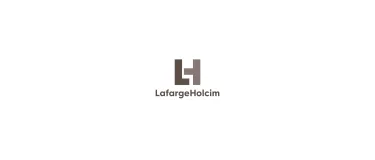LafargeHolcim: Board of Directors concludes Syria Review and confirms remedial measures
On 2 March 2017 LafargeHolcim communicated the initial findings of an independent internal investigation, commissioned by the Board of Directors, into allegations concerning the Lafarge plant in Syria: specifically that company personnel had engaged in dealings with armed groups and sanctioned parties during 2013 until the plant closed in September 2014. The internal investigation was carried out by independent external counsel with substantial experience in complex cross-border investigations.
The Board has now concluded the independent investigation and confirmed that a number of measures taken to continue safe operations at the Syrian plant were unacceptable, and significant errors of judgement were made that contravened the applicable code of conduct. The findings also confirm that, although these measures were instigated by local and regional management, selected members of Group management were aware of circumstances indicating that violations of Lafarge’s established standards of business conduct had taken place.
As part of the internal investigation and given his current role as CEO of LafargeHolcim, the role and potential implication of Eric Olsen has been a point of attention. Following an in-depth review, the Board has concluded that Eric Olsen was not responsible for, nor thought to be aware of, any wrongdoings that have been identified as part of its review. In light of current legal proceedings in France, the company will not comment further on the findings or individual conduct.
The Board confirms the remedial measures announced on 2 March 2017, on the basis of the earlier findings including: the adoption of a more rigorous risk assessment process focusing on high risk third parties; introduction of a restricted party screening program and a new sanctions and export control program; as well as continuation of other efforts from an external benchmarking exercise. Having now concluded the review, the Board has mandated Eric Olsen and his executive management team to implement these remedial measures.
The previously announced Ethics, Integrity & Risk Committee will be responsible for overseeing the rigorous implementation which will strengthen and enhance Group-wide compliance. The committee is co-chaired by the Executive Committee member responsible for Organization and Human Resources and the Chief Legal and Compliance Officer, and reports to the Finance and Audit Committee of the Board of Directors.
Beat Hess, Chairman of the Board of LafargeHolcim said: “Although I appreciate that those responsible for the Syrian operations appear to have acted in a manner they believed was in the best interests of the company and its employees, there can be no compromise when it comes to compliance rules and adherence to the standards set out in the company’s code of conduct, no matter what the operational challenges are. We are absolutely committed to ensuring that events like those that occurred in Syria must never happen again at LafargeHolcim.”
Based on the updated information available today, there remains no indication that the reported allegations are likely to have an adverse financial impact that is material to the Group.
A summary of the final report on the investigation can be downloaded from LafargeHolcim’s website.
About LafargeHolcim
LafargeHolcim is the leading global building materials and solutions company serving masons, builders, architects and engineers all over the world. Group operations produce cement, aggregates and ready-mix concrete which are used in building projects ranging from affordable housing and small, local projects to the biggest, most technically and architecturally challenging infrastructure projects. As urbanization increasingly impacts people and the planet, the Group provides innovative products and building solutions with a clear commitment to social and environmental sustainability. With leading positions in all regions, LafargeHolcim employs around 90,000 employees in more than 80 countries and has a portfolio that is equally balanced between developing and mature markets.
About LafargeHolcim in Syria
Due to the nature of cement and its manufacture, cement plants are located in or near the markets they serve. In some locations, this presents distinct challenges. Syria is one such place. Lafarge’s cement plant in Syria took almost 3 years to build at a cost of approximately $680 million. It started production in May 2010 and was a source of meaningful employment for the surrounding communities, as well as providing cement for homes, businesses, roads and other infrastructure for various communities throughout Syria. Almost from its opening, the political situation in Syria deteriorated rapidly, posing very difficult challenges for the security and operation of the plant and its employees. Such challenges included disruption of the supplies needed to operate the plant, difficulties with product distribution and threats to the safety of employees. Different armed political factions controlled or sought to control the areas around the plant at different times. Conditions around the plant became increasingly difficult in 2014 resulting in the evacuation of the plant in September 2014. The Group has not attempted to operate on site since that time.
Important disclaimer - forward-looking statements
This document contains forward-looking statements. Such forward-looking statements do not constitute forecasts regarding results or any other performance indicator, but rather trends or targets, as the case may be, including with respect to plans, initiatives, events, products, solutions and services, their development and potential. Although LafargeHolcim believes that the expectations reflected in such forward-looking statements are based on reasonable assumptions as at the time of publishing this document, investors are cautioned that these statements are not guarantees of future performance. Actual results may differ materially from the forward-looking statements as a result of a number of risks and uncertainties, many of which are difficult to predict and generally beyond the control of LafargeHolcim, including but not limited to the risks described in the LafargeHolcim's annual report available on its Internet website (www.lafargeholcim.com) and uncertainties related to the market conditions and the implementation of our plans. Accordingly, we caution you against relying on forward looking statements. LafargeHolcim does not undertake to provide updates of these forward-looking statements.
Contacts
- Zug: +41 (0) 58 858 87 10
- Zug: +41 (0) 58 858 87 87






